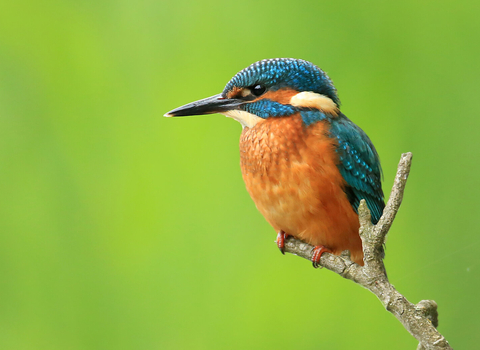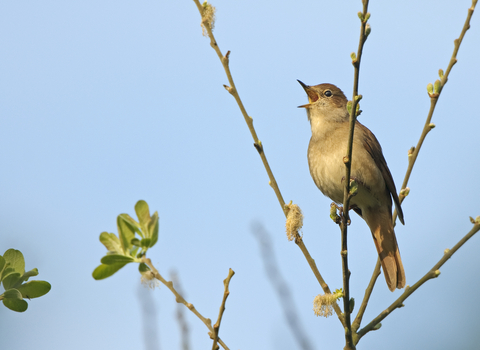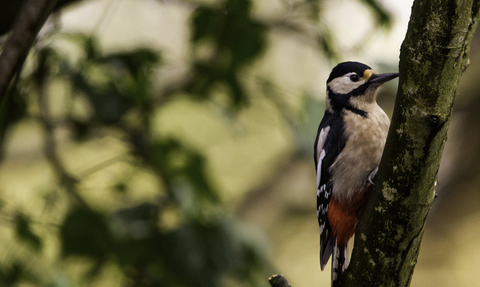
Great spotted woodpecker by Sam Hockaday
Identify woodpeckers
Drum roll please...
In early spring woodpeckers bang their bills against the trunk of a tree over and over again. This is known as ‘drumming’. Woodpeckers drum for the same reasons that other birds sing – to mark their territory and to attract a mate. There are three species of British woodpecker and they've each got their own unique and interesting talents.
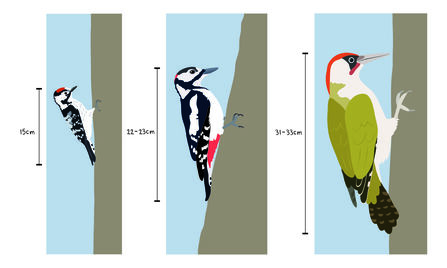
Woodpeckers by Corinne Welch
Green woodpecker
With its brightly-coloured feathers, the green woodpecker looks a bit like a big parrot. It’s our largest species, but hardly ever drums (and, to be honest, it sounds a bit feeble when it does!). Instead, green woodpeckers communicate with a loud call that sounds like a crazy laugh and is known as a ‘yaffle’.
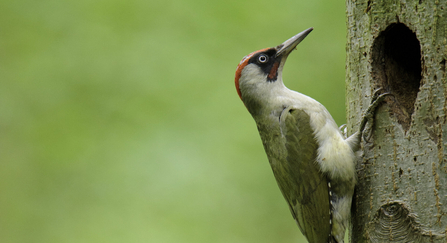
Green woodpecker by Andrew Mason
Great spotted woodpecker
The great spotted woodpecker is black and white, with white shoulder patches and red underneath the tail. Males have a red patch at the back of the head. Great spots (as birdwatchers call them) are our most common woodpeckers and the best drummers by a long way. They beat their beaks against hollow branches or tree-trunks at a stunning 40 hits per second (try drumming your fingers at that speed).
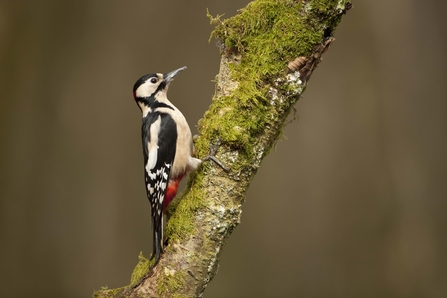
©Mark Hamblin/2020VISION
Lesser spotted woodpecker
This is Britain’s smallest woodpecker by far – it’s barely bigger than a sparrow! Males are black and white, with a red crown cap, and females are plain black and white. They both have a distinctive white ladder marking down their black back. It’s our rarest as well and only lives in England and Wales. Listen out for their drum solos in spring – they may be quieter than the great spot’s, but they last longer.
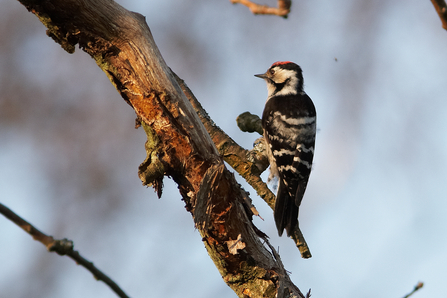
©Stefan Johansson




